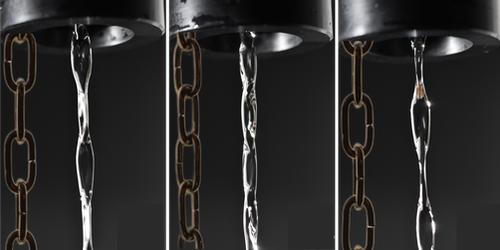Water-Jet Patterns Predicted
Pour coffee into a mug and you might notice that the water cascading from the jug resembles a chain in which the links are oriented at 90 degrees to each other. Such flowing chains crop up frequently in our daily lives, but their origin is still not fully understood. Now Antoine Deblais of the University of Amsterdam and colleagues have experimentally shown that the wavelength and amplitude of the chain’s links are directly tied to the size of the opening through which the liquid flows [1]. The findings could have applications in technologies ranging from ink-jet printers to metallurgy devices, as well as in problems related to the human body, for example, in urological diseases.
For their study, Deblais and colleagues released a laminar jet of water through a nozzle with an elliptical orifice. They altered the ellipse to create 12 differently sized holes with areas ranging from 0.34 to 4.48 cm2. They captured the resulting jets with a camera, extracting from the photographs the shape of the jets’ links.
The team found that the dimensions of the orifice correlated with the wavelength and amplitude of a jet’s chain-link pattern. They performed numerical simulations that accurately predicted the parameters of the links from the nozzle size and flow rate.
The researchers say that they next plan to conduct experiments using liquids other than water, for example, the complex polymer solutions commonly used in industry. They would also like to investigate the effect of nonelliptical orifices, such as star or square openings, on the jet pattern.
–Allison Gasparini
Allison Gasparini is a freelance science writer based in Santa Cruz, CA.
References
- D. T. A. Jordan et al., “Chain oscillations in liquid jets,” Phys. Rev. Fluids 7, 104001 (2022).




